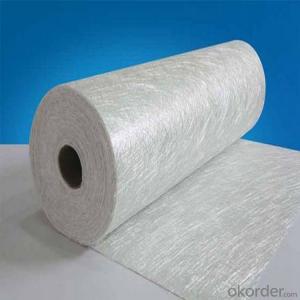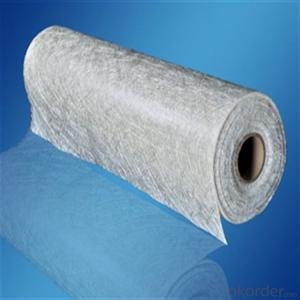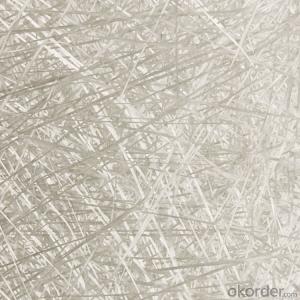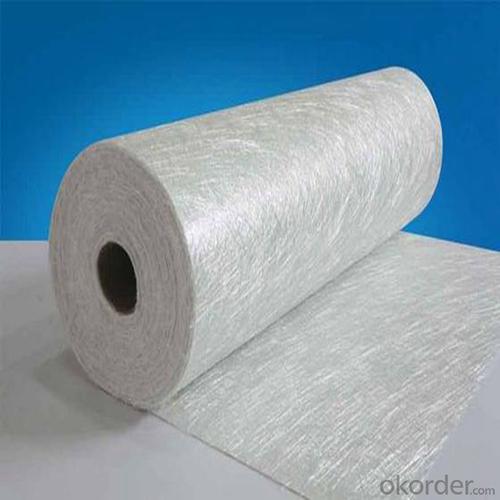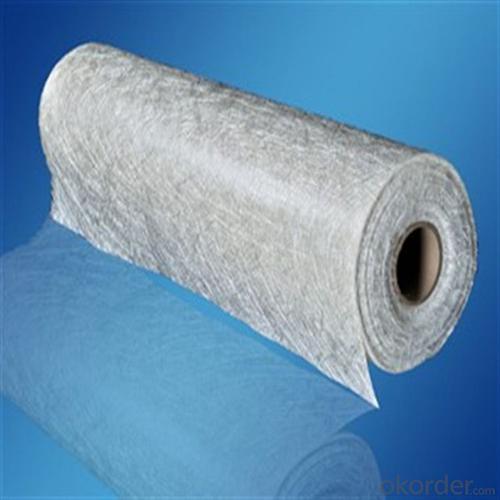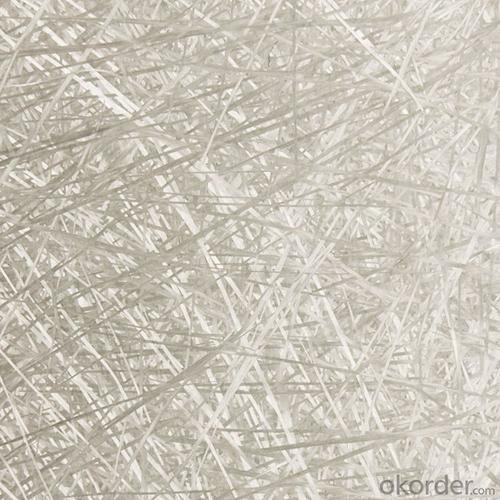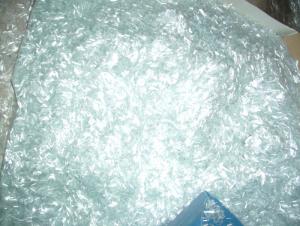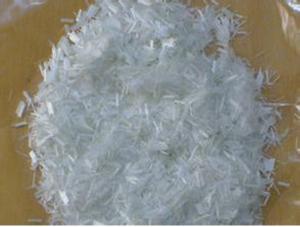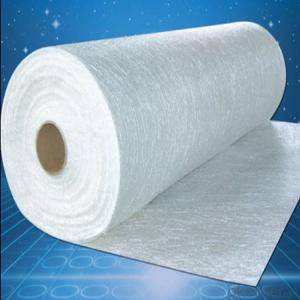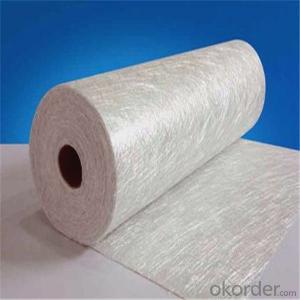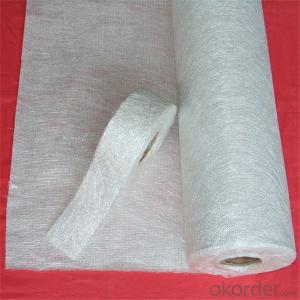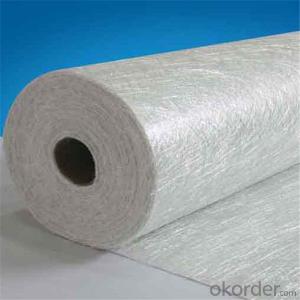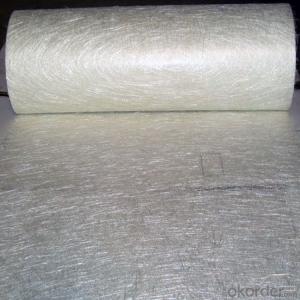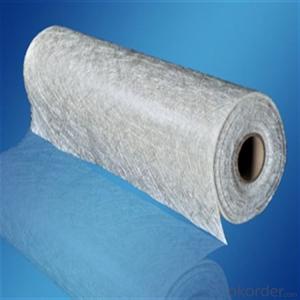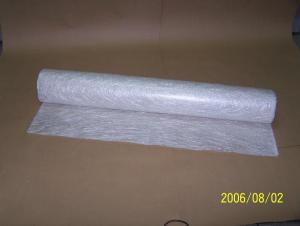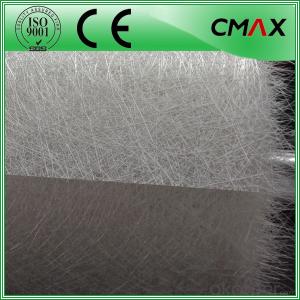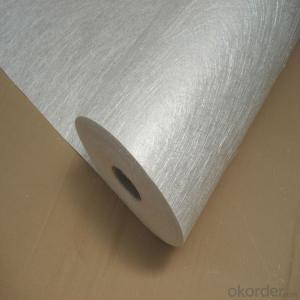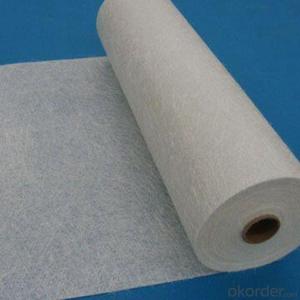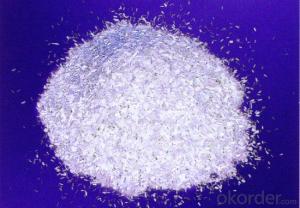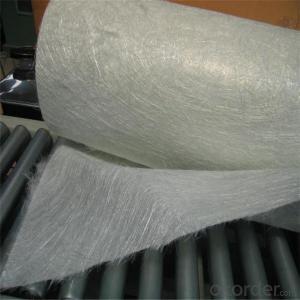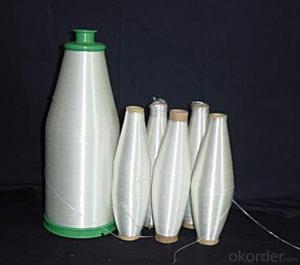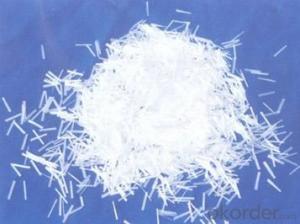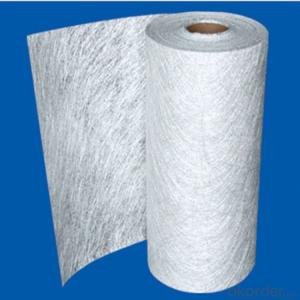Raw Materials Reinforced Fiberglass Chop Strand Mat, Glass Fiber Fabric
- Loading Port:
- China main port
- Payment Terms:
- TT OR LC
- Min Order Qty:
- 1 kg
- Supply Capability:
- 10000 kg/month
OKorder Service Pledge
OKorder Financial Service
You Might Also Like
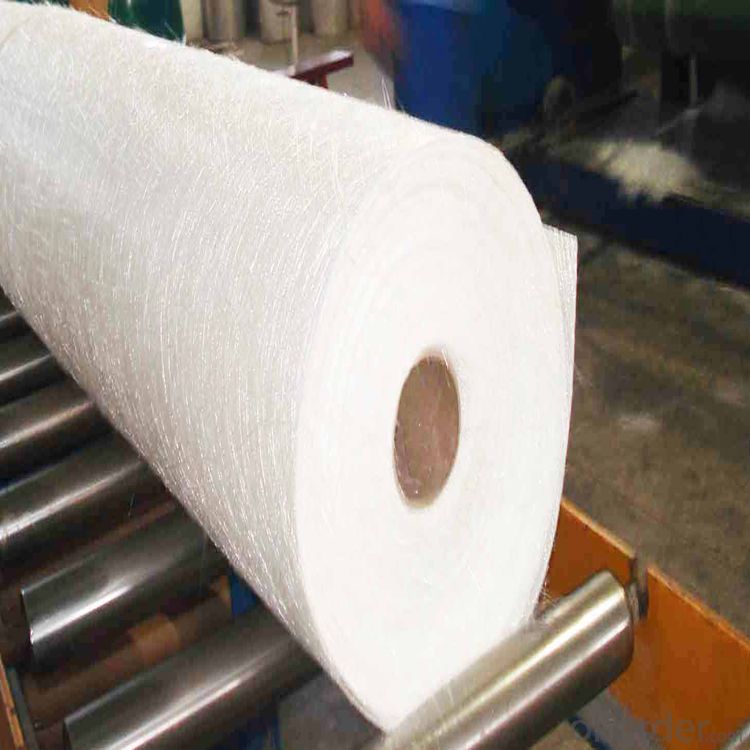
Product Description:
Fiberglass Chopped Strand Mat is fine strand reinforcement material made from E-glass cut fibers laid in a random pattern and bonded with powder or emulsion binder.
It is easy to handle and has excellent moulding performance.
Also, it has rapid resin penetration together with a fast strand wet out time.
The mat also brings a highly translucent finished laminates.
Also,the fine strand input makes the fiber prominence at the finished laminates surface extremely low.
Features
1.Excellent weight uniformity
2.Fast wet out
3.Easy air release
4.Excellent transparency of finished products
5.Excellent laminate
6.Low resin consumption
Application
1.Translucent roof panel
2.chemical storage tanks
3.FRP pipes
4.Boat hulls
5.Decks
6.Truck body panel
7.Cooling towers
8.Corrosion resistand
Specifications:
Item | Over Density | Moisture Content | Chop Density | Polyester Yarn | Width |
(g/m2) | (%) | (g/m2) | (g/m2) | (mm) | |
EMK300 | 309.5 | ≤0.15 | 300 | 9.5 | 50-3300 |
EMK380 | 399 | 380 | 19 | ||
EMK450 | 459.5 | 450 | 9.5 | ||
EMK450 | 469 | 450 | 19 | ||
EMC0020 | 620.9 | 601.9 | 19 | ||
EMC0030 | 909.5 | 900 | 9.5 |
Special products are available according to customer’s requirement.
Product Packaging:
Each Surface Tissue is wound onto a paper tube which has an inside diameter of 76mm and the mat roll has a diameter of 330mm. The mat roll is wrapped up with plastic film,and then packed in a cardboard box or wrapped up with kraft paper. The rolls can be vertically or horizontally placed. For transportation, the rolls can be loaded into a cantainer directly or on pallets.
Quantity
20'GP Container:About 10000kgs
40'HP Container:Aboout 23100kgs
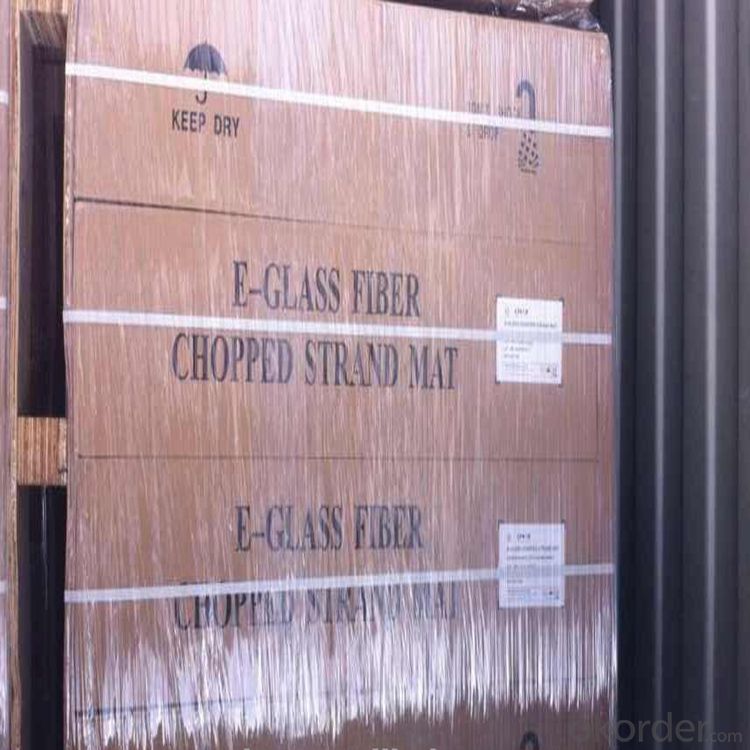
Product Storage:
Unless otherwise specified, Chopped Strand Mat should be stored in a dry, cool and rain-proof area. It is recommended that the room temperature and humidity should be always maintained at 15℃~35℃ and 50%~75% respectively.
Company Information
CNBM (China National Building Material) Group is the largest comprehensive building materials group in China that in integrate scientific research, manufacturing and logistics into one entity. The largest building materials and equipment specialists in China. Upon State Council approval, today CNBM owned more than 300 subordinate manufacturing factories and servicing companies. There are 6 fully owned public listed companies and 11 partially owned with substantial shares public listed companies. In many of these fields, CNBM is playing the leading role in the building industry in the country.
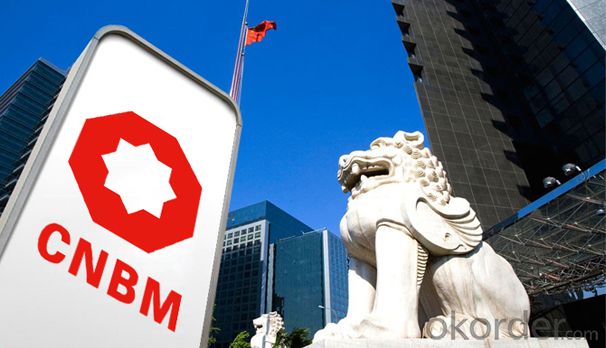
Our Service:
1.Any inquiry will be replied within 24 hours.
2.Professional manufacturer.
1) Print logo in the products;
2) The size and specification can be produce and design according to your demand.
3.High quality,fashion designs,reasonable and competitive price,fast lead time.
4.After-sale service
1) All products will have been strictly quality check in house before packing.
2) All products will be well packed before shipping.
3) All our products have 10 years rot resistance.
5.Faster delivery:sample order in stock,and 15-20 days for bulk production.
6.Payment:you can pay for the order via:T/T,Western Union,MoneyGram,L/C etc.
FAQ:
which kind of glass fiber sample and materials can you provide?
We can provide the glass fiber and glass fiber down stream products samples of E glass, C glass, ECR glass, High alkali glass. The products includes single end roving, assembled roving for different applications( Piping, SMC, panel, winding mill plate) , chop strand for BMC, engineering plastic (PA, PPA, PPT, POM, etc), chop strand mat (from 100gsm-900gsm) for automobile and water tank, etc, woven roving (270gsm-800gsm), surface tissue (25-50gsm), multi-axial fabric of different unit weight.
- Q: What are the typical creep properties of chopped strand composites?
- The typical creep properties of chopped strand composites include a low creep rate, high creep resistance, and minimal creep deformation under sustained loading. These properties are a result of the reinforcement provided by the chopped strands, which enhance the composite's overall strength and stiffness, reducing the likelihood of creep occurring.
- Q: How does the length of the fiberglass chopped strand affect its performance?
- The length of the fiberglass chopped strand can significantly affect its performance. Longer strands provide higher strength and stiffness, allowing for increased load-bearing capabilities. They also improve impact resistance and durability. However, shorter strands are easier to handle and distribute throughout a composite material, leading to improved processability. Therefore, the length of the fiberglass chopped strand must be carefully selected based on the specific requirements of the application to optimize its performance.
- Q: What are the typical packaging options for fiberglass chopped strand?
- The typical packaging options for fiberglass chopped strand include bags, boxes, and pallets. Fiberglass chopped strand is generally packaged in bags made of plastic or paper, which are convenient for small quantities and easy to handle. These bags come in various sizes, ranging from a few kilograms to larger sizes for industrial applications. For larger quantities, fiberglass chopped strand can be packaged in boxes or cartons. These boxes are usually made of corrugated cardboard and provide additional protection during transportation and storage. They are commonly used for commercial or industrial purposes, where larger quantities of chopped strand are required. In some cases, fiberglass chopped strand can also be packaged on pallets. This option is suitable for bulk orders or when the product needs to be transported in large quantities. Pallets provide stability during handling and can be easily loaded onto trucks or shipping containers, making them suitable for long-distance transportation. Overall, the choice of packaging option for fiberglass chopped strand depends on the quantity, intended use, and transportation requirements.
- Q: Is fiberglass chopped strand compatible with different processing techniques?
- Fiberglass chopped strand is indeed compatible with various processing techniques. One can utilize it in a multitude of processes, such as injection molding, compression molding, pultrusion, filament winding, and hand lay-up. By combining the chopped strands with a resin matrix, which may be either thermosetting or thermoplastic, a composite material is formed. The adaptability of fiberglass chopped strand enables its application across diverse industries, including automotive, construction, aerospace, and marine.
- Q: Can fiberglass chopped strand be used in the production of insulation blankets?
- Indeed, the utilization of fiberglass chopped strand is applicable in the manufacturing of insulation blankets. This lightweight and adaptable material possesses exceptional thermal insulation characteristics. It can be effortlessly manipulated and shaped into insulation blankets, which find extensive use in diverse industries for thermal and acoustic insulation objectives. The incorporation of chopped strands effectively augments the overall insulation efficacy of the blankets, forming a compact and consistent layer of insulation material. Moreover, fiberglass chopped strand exhibits resistance against moisture, chemicals, and fire, thus rendering it an optimal selection for insulation applications.
- Q: How does the fiber length distribution of fiberglass chopped strand affect the properties of composites?
- The fiber length distribution of fiberglass chopped strand greatly affects the properties of composites. Fibers of different lengths have different mechanical properties, such as strength and stiffness. When the fiber length distribution is uniform, it can result in a more homogeneous distribution of reinforcing fibers in the composite, leading to improved mechanical properties. However, if the fiber length distribution is skewed or contains a large variation in lengths, it can result in an uneven distribution of fibers within the composite, which can weaken the overall strength and stiffness of the material. Therefore, controlling and optimizing the fiber length distribution is crucial in order to achieve desired properties and performance in composite materials.
- Q: Can fiberglass chopped strand be used in the production of electrical enclosures?
- Indeed, the utilization of fiberglass chopped strand is viable in the manufacturing of electrical enclosures. Fiberglass, being an adaptable substance, presents numerous advantages for such enclosures. It boasts commendable insulating properties, effectively safeguarding electrical equipment and components. By incorporating fiberglass chopped strand into the production process, the enclosure gains enhanced durability and resistance against impact and corrosion. Furthermore, fiberglass possesses a lightweight nature and lends itself to effortless manipulation, allowing for the realization of intricate shapes and designs. In conclusion, fiberglass chopped strand serves as a fitting material for the production of electrical enclosures, offering both electrical insulation and structural fortification.
- Q: What are the typical moisture absorption characteristics of chopped strand composites?
- The construction of chopped strand composites typically results in excellent resistance to moisture absorption. The materials used, including glass fibers or other high-performance materials, have inherently low moisture absorption properties. Moreover, the matrix material, like resin or polymer, is often selected for its hydrophobic nature, which further decreases moisture absorption. As a result of this combination of low moisture absorption fibers and hydrophobic matrix material, chopped strand composites demonstrate high resistance to absorbing moisture. This means that they are less likely to undergo dimensional changes, warping, or degradation when exposed to moisture or high humidity environments. Nevertheless, it is important to note that the moisture absorption characteristics of chopped strand composites can vary depending on the specific materials and manufacturing process utilized. If the composite is not properly sealed or has structural defects, it may be more susceptible to moisture absorption. Additionally, certain types of resins or fibers may have higher moisture absorption rates than others. In general, however, chopped strand composites are well-regarded for their low moisture absorption properties, making them a popular choice in industries such as marine, automotive, or construction where moisture resistance is crucial.
- Q: How does the fiber length affect the processability of fiberglass chopped strand composites?
- The fiber length of fiberglass chopped strand composites has a significant impact on their processability. A longer fiber length tends to enhance the mechanical properties of the composite, such as its strength and stiffness. This is because longer fibers provide a greater surface area for bonding with the matrix material, resulting in improved load transfer and resistance to deformation. Additionally, longer fibers can bridge larger gaps between reinforcing elements, increasing the overall integrity of the composite structure. However, longer fiber lengths can also present challenges during the manufacturing process. Longer fibers can become entangled and clump together, making it difficult to achieve a uniform dispersion within the matrix material. This can result in poor wetting and bonding between the fibers and the matrix, leading to weak interfacial adhesion and reduced mechanical performance. On the other hand, shorter fiber lengths offer better processability due to their improved ability to disperse uniformly within the matrix material. Shorter fibers are less likely to tangle or clump together, facilitating a more even distribution throughout the composite. This leads to enhanced wetting and bonding between the fibers and the matrix, resulting in improved interfacial adhesion and overall mechanical properties. In summary, while longer fiber lengths offer superior mechanical properties, they can pose challenges in terms of processability. Shorter fiber lengths, on the other hand, provide better processability but may sacrifice some mechanical performance. Finding the optimal fiber length for a specific application requires careful consideration of the desired mechanical properties and the manufacturing process conditions.
- Q: How does the surface treatment of fiberglass chopped strand affect its adhesion to resin?
- The adhesion of resin to fiberglass chopped strand is significantly affected by the surface treatment. During the manufacturing process, fiberglass chopped strand is typically treated with a sizing agent to improve its compatibility with resin systems. The purpose of this surface treatment is to establish a chemical bond between the chopped strand and the resin matrix. By creating a thin layer on the surface of the fiberglass strands, the sizing agent acts as a bridge between the hydrophilic glass fibers and the hydrophobic resin. This layer enhances the wetting and adhesion properties of the fiberglass, promoting better bonding with the resin. The choice of sizing agent depends on the specific resin system being utilized. Different types of sizing agents can be employed to optimize adhesion with polyester, epoxy, or vinyl ester resins. Moreover, the sizing agent can be customized to offer additional advantages, such as improved impact resistance, UV stability, or heat resistance. If the fiberglass chopped strand is not adequately surface treated, the adhesion between the strands and the resin may be compromised. Inadequate wetting of the fibers by the resin can result in weak interfacial bonding, leading to delamination or reduced mechanical properties in the final composite product. In summary, the surface treatment of fiberglass chopped strand plays a vital role in enhancing its adhesion to resin. It enhances the wetting and bonding properties, ensuring the creation of a robust and long-lasting composite material.
Send your message to us
Raw Materials Reinforced Fiberglass Chop Strand Mat, Glass Fiber Fabric
- Loading Port:
- China main port
- Payment Terms:
- TT OR LC
- Min Order Qty:
- 1 kg
- Supply Capability:
- 10000 kg/month
OKorder Service Pledge
OKorder Financial Service
Similar products
Hot products
Hot Searches
Related keywords
